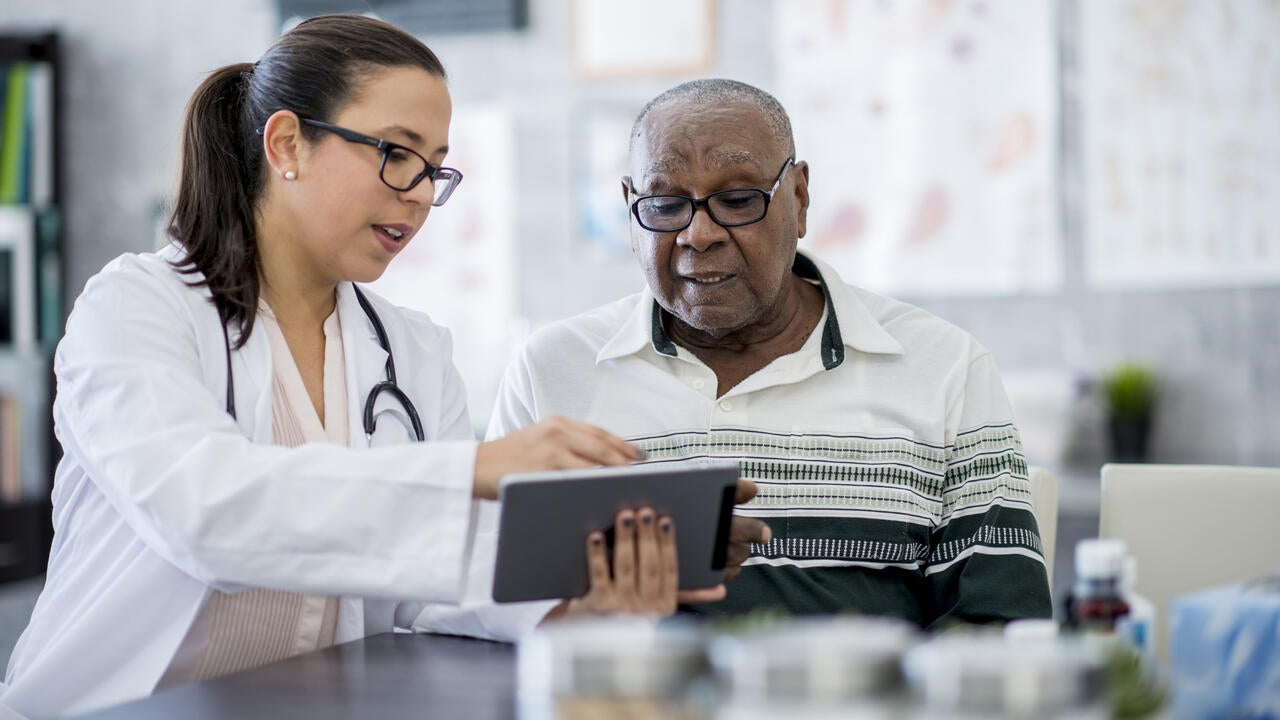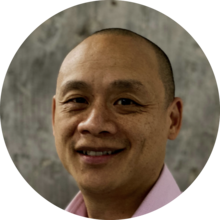
Preparing for the next pandemic
An interdisciplinary team of Waterloo alumni and researchers develop an AI-powered surveillance system for future pandemics

An interdisciplinary team of Waterloo alumni and researchers develop an AI-powered surveillance system for future pandemics
By Wendy Philpott Faculty of ArtsNobody wants to think about the next pandemic. But we need to be prepared, and a critical step in prevention is early detection and intervention.
That’s why GoodLabs Studio, a company with strong ties to the University of Waterloo, is advancing the power of machine learning and artificial intelligence (AI) to alert health-care authorities with real-time, data-driven insights for decision-making to prevent a future pandemic.
In early 2021, Canada’s Department of National Defense (DND) invited proposals for innovations that strengthen the response to future pandemics. GoodLabs, co-founded by Thomas Lo (BMath ’94) jumped on the opportunity and have since won two successive grants from DND to develop the Syndrome Anomaly Detection System (SADS).
SADS performs widespread disease monitoring to detect patterns of atypical disease across communities so that healthcare and policy leaders can act quickly.
“We’ve learned from COVID-19 just how fast-moving pandemics are, and therefore how valuable reliable data in real-time is for understanding risk,” says Dr. Jean-Paul Lam of the Department of Economics, special advisor and team lead for AI outbreak detection on the project.
It begins with a mobile app in a doctor’s office or health care clinic. The SADS app uses natural language processing to anonymously capture symptoms described during the patient-doctor conversation. That data is then aggregated and categorized using deep language machine learning for the purpose of detecting increases in atypical symptoms within the population and evaluating risk of spread.
Of course, it’s vital that the data collection and analysis do not compromise any patient’s privacy. To maintain confidentiality, the team has deployed natural language processing (NLP) AI technology within the app rather than uploading the conversation data to the cloud. The patient’s personal information is protected, and only the pertinent details — symptoms, age, gender, location — are collected and aggregated.
The SADS back-end platform uses machine learning analytics to code the symptoms according to the International Classification of Diseases (ICD-10) and rank how typical or atypical they are. By tracking the atypical symptoms over time, SADS builds a statistical visualization representing how a novel disease might be spreading in a community. The system generates an alert with the key information about a potential outbreak and shares it in real-time with health and government authorities.
When the team ran a simulation of the COVID-19 outbreak in 2020 in several Canadian cities, they found that Toronto, for example, already had a detectable outbreak a full week before the city declared a lockdown. The simulation suggests that if SADS had been available at the time, a more proactive response would have been possible.
With the potential to aggregate health data generated around the world, SADS could be used locally, nationally and globally — certainly, that is the vision.
“We fundamentally believe there is an unbounded opportunity for positive impact,” says Lo. “We aim to deploy the Syndrome Anomaly Detection System in hospital triages, clinics, telehealth and eHealth forums — a system that can provide authorized government and health entities early warning of the next pandemic and its spread pattern.”
 As an advanced software innovation studio, GoodLabs combines “the best subject matter experts, researchers and software engineers to solve complex problems together,” says Lo.
As an advanced software innovation studio, GoodLabs combines “the best subject matter experts, researchers and software engineers to solve complex problems together,” says Lo.
The interdisciplinary SADS project team includes medical professionals, AI researchers and software engineers — and an economist. Lam is an expert in econometrics and machine learning in the finance sector and has previously worked with Lo on a blockchain and cryptocurrency project. “Economists tend to get involved in things that they shouldn't be involved in,” he laughs.
 The AI group led by Lam has connections to Waterloo’s Faculties of Mathematics, Science, and Arts. In Arts, Lam supervises Chris McMahon (PhD ’19 Physics) a post-doctoral researcher in Economics with expertise including quantum computing and AI; Rafik Rhouma, who holds a PhD in AI, is also a postdoc based in Economics working with Lam. Paul Gege, the project’s lead software innovation engineer, is a master’s candidate in human-computer interaction based in Math.
The AI group led by Lam has connections to Waterloo’s Faculties of Mathematics, Science, and Arts. In Arts, Lam supervises Chris McMahon (PhD ’19 Physics) a post-doctoral researcher in Economics with expertise including quantum computing and AI; Rafik Rhouma, who holds a PhD in AI, is also a postdoc based in Economics working with Lam. Paul Gege, the project’s lead software innovation engineer, is a master’s candidate in human-computer interaction based in Math.
As proud Waterloo alumni, Lo and his GoodLabs co-founder, Riyaz Somani (BASc ’92), often collaborate with members of the University. “We always find the professors are so down-to-earth to work with, and the postdocs and students all have a very strong culture in support of creating a significant impact.”
About Lo, Lam says “Thomas is a very natural leader. He brings this passion, not only for what he does, but to bring together people from very different disciplines and make them work well together while keeping an eye on the ball.”
“It’s a super interesting project to work on,” he continues. “It was really about ‘How can we help?’ I think that was great motivation for us. Once it’s deployed, we believe the SADS technology will make a difference.”

Read more
Researchers simulate the transmission of variants and effects of health measures

Read more
Professor Servos has been leading wastewater testing locally and across Canada

Read more
Professor Kelly Grindrod answers questions about Pfizer’s COVID-19 antiviral treatment Paxlovid
The University of Waterloo acknowledges that much of our work takes place on the traditional territory of the Neutral, Anishinaabeg, and Haudenosaunee peoples. Our main campus is situated on the Haldimand Tract, the land granted to the Six Nations that includes six miles on each side of the Grand River. Our active work toward reconciliation takes place across our campuses through research, learning, teaching, and community building, and is co-ordinated within the Office of Indigenous Relations.